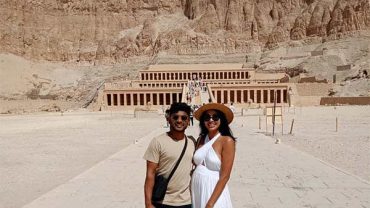Nestled along the banks of the Nile River, Esna Temple stands as a testament to Egypt’s rich cultural and historical tapestry. This ancient marvel, dedicated to the falcon-headed god Khnum, has withstood the test of time, offering a mesmerizing glimpse into the bygone era of Pharaonic civilization. As visitors step onto the sacred grounds, they are immediately immersed in the aura of mystery and spirituality that permeates every stone and carving. Beyond its architectural grandeur, Esna Temple beckons curious minds to unravel the secrets that lie within its hallowed halls.
Architectural Splendor
The magnificence of Esna Temple is unveiled in its architectural splendor, showcasing the ingenuity of ancient Egyptian craftsmen. Carved reliefs and hieroglyphics adorn the temple walls, narrating tales of gods, pharaohs, and the eternal cycle of life and death. The intricate details of the temple’s design not only serve as a visual feast for admirers but also provide a glimpse into the religious significance embedded in every facet. The hypostyle hall, with its towering columns and well-preserved ceiling, transports visitors to an era when art and spirituality converged seamlessly. Each column tells a story, each wall whispers ancient wisdom, inviting enthusiasts to delve deeper into the profound symbolism etched in stone.
Religious Significance
Esna Temple’s spiritual resonance echoes through the ages, underscoring its profound religious significance in ancient Egyptian beliefs. Dedicated to Khnum, the god of creation and fertility, the temple served as a sacred space where rituals and ceremonies unfolded in reverence. Pilgrims would seek Khnum’s blessings for bountiful harvests and the prosperity of their communities. The rituals performed within these sacred precincts were believed to forge a connection between the mortal realm and the divine, creating a harmonious balance that sustained life along the Nile. Today, as visitors explore the temple, they are transported back in time, feeling the spiritual energy that lingers within the ancient stones, a palpable connection to the rituals that once unfolded under the desert sun.
Historical Context
Esna Temple unfolds a chapter of history that remains etched in the annals of ancient Egypt. Dating back to the Ptolemaic period, this architectural gem witnessed the ebb and flow of empires, the rise and fall of pharaohs, and the enduring resilience of Egyptian civilization. The temple’s well-preserved state offers historians and archaeologists a rare canvas to decipher the cultural nuances and societal structures of a bygone era. The inscriptions and reliefs act as silent chronicles, shedding light on the religious practices, societal norms, and the symbiotic relationship between the pharaohs and their gods. Exploring Esna Temple is, therefore, akin to stepping into a living history book, where the past comes to life in vivid detail.
Visitor Experience
Beyond its historical and architectural allure, Esna Temple promises a captivating experience for modern-day visitors. The site’s serene ambiance invites contemplation, allowing individuals to absorb the ancient wisdom that permeates the air. Guided tours, enriched with informative narratives, enhance the visitor’s understanding of the temple’s cultural and religious significance. As the golden hues of the sunset cast a warm glow upon the ancient stones, Esna Temple imparts a sense of awe and wonder that transcends time. For those seeking a profound connection with Egypt’s storied past, Esna Temple stands as an unparalleled destination, a living testament to the enduring legacy of one of the world’s most remarkable civilizations.
Ongoing Preservation Efforts
Esna Temple, though a timeless gem, is not immune to the ravages of time and modern influences. Preservation efforts play a crucial role in maintaining the temple’s integrity for future generations. Dedicated teams of archaeologists, conservators, and historians tirelessly work to safeguard Esna Temple against environmental factors and the passage of time. From meticulous cleaning of ancient carvings to strategic structural interventions, these preservation initiatives ensure that the temple remains a living testament to Egypt’s past. Through careful restoration, the essence of Esna Temple is preserved, allowing each visitor to connect authentically with the rich history encapsulated within its sacred precincts.
Cultural Significance Beyond Borders
Esna Temple transcends geographical boundaries, captivating the imaginations of people worldwide. Its influence extends beyond the banks of the Nile, resonating with those who marvel at the achievements of ancient Egyptian civilization. The temple serves as a cultural bridge, fostering a global appreciation for the artistic, architectural, and spiritual contributions of this bygone era. As a beacon of cultural heritage, Esna Temple reminds us that history is a shared narrative, binding humanity through the threads of time. Its allure beckons travelers from all corners of the globe, inviting them to partake in the universal legacy of human civilization.
Educational Opportunities
Esna Temple stands not only as a monument of the past but also as an invaluable educational resource. Schools, universities, and educational institutions leverage the temple’s historical wealth to offer students immersive learning experiences. Field trips to Esna Temple become a journey through the corridors of time, allowing students to witness firsthand the tangible remnants of an ancient civilization. The inscriptions on the temple walls become a living textbook, teaching lessons in archaeology, art, and cultural anthropology. By integrating Esna Temple into educational curricula, educators ensure that the legacy of ancient Egypt continues to inspire and educate generations to come.
Sustainable Tourism
As Esna Temple attracts a growing number of visitors, the concept of sustainable tourism becomes paramount. Balancing the influx of tourists with the need to preserve the site’s integrity requires thoughtful planning and responsible practices. Local communities, in collaboration with tourism authorities, play a pivotal role in fostering sustainable tourism around Esna Temple. Initiatives such as community engagement, eco-friendly infrastructure, and cultural sensitivity training contribute to a holistic approach that ensures the continued protection of this cultural treasure. By embracing sustainability, Esna Temple becomes not just a tourist destination but a guardian of its own legacy, fostering a harmonious coexistence between the past and the present.
Future Prospects and Discoveries
The story of Esna Temple continues to unfold as ongoing excavations and research reveal new layers of understanding about ancient Egypt. Archaeologists delve deeper into the temple complex, unearthing hidden chambers, deciphering additional inscriptions, and piecing together the puzzle of Esna’s historical significance. The anticipation of future discoveries adds an element of excitement, keeping the allure of Esna Temple alive. As technology advances, so does our ability to uncover more about this ancient marvel, promising fresh insights that will contribute to the ever-evolving narrative of human history.




Comment (0)